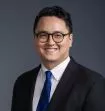The Department of Homeland Security (DHS) has published a new proposed rule to redesign the H‑1B program, a visa category commonly used by US employers to hire skilled foreign workers.
DHS plans to utilize a weighted selection process that would favor the allocation of H-1B visas to higher paid candidates. The proposal would end the "one person, one chance" model, shifting to a model where each candidate's chances would be tied to their wage level.
Context: What You Need to Know about the H-1B Program
Congress statutorily limits the number of new H-1B visas that may be approved each fiscal year.1 To address the high demand, US Citizenship and Immigration Services (USCIS) oversees a random selection process to allocate the visas each year. If a registration for a beneficiary2 is selected in the lottery, the US employer may proceed to submit an H-1B petition on behalf of the individual.
Under the new proposal, USCIS would move away from a random selection process to a weighted selection process, with the goal of altering the allocation of H-1B visas to higher-skilled and higher-paid foreign nationals. DHS believes this framework will better serve the congressional intent for the H-1B program.
Redefining the Odds: What Will Change Under the Proposed Rule
- Weighting Mechanics: Beneficiaries will be
registered by the US employer for an H-1B visa using a weighted
system. Those individuals with an offered wage corresponding to
Level I (the lowest) will be entered one time in the selection
pool, Level II will be entered two times, Level III will be entered
three times, and Level IV (the highest level) will be entered into
the selection pool four times.
For example, the wage levels set by the Department of Labor for a Software Developer in New York, New York range from $103,210.00 (Level 1) to $189,592.00 (Level 4).
| Wage Level | Description |
|---|---|
| Level 1 Entry-level | Basic understanding, performs routine tasks under close supervision. |
| Level 2 Qualified | Requires some experience, performs moderately complex tasks with limited supervision. |
| Level 3 Experienced | Considerable experience, performs complex tasks independently. |
| Level 4 Fully Competent | Extensive experience, exercises independent judgment, may supervise or lead others. |
- Required Information at Registration and Petition Phases: At the registration phase, employers will be required to select the appropriate occupation, wage level, and area of employment for each candidate. If a beneficiary is selected and USCIS determines that the petitioner attempted to increase the beneficiary's odds by indicating a higher wage level in the registration but later stating a lower wage level in the petition, USCIS may deny the petition or revoke an already approved petition.
- Multiple Worksites: If the beneficiary will work at multiple worksites, the lowest corresponding wage level associated with the position governs. For example, a beneficiary might work as a Software Developer at a wage of $175,000 in both San Francisco, California, where the highest level that such wage meets or exceeds would be wage Level 2, and Sacramento, California, where such wage exceeds wage Level 4. The employer would select the wage Level 2 on the registration form and list San Francisco as the area of intended employment.
- Changes in Work Location: In its discretion, USCIS may find that a change in worksite location (corresponding to a lower wage level) is permissible, so long as it views this change as consistent with a bona fide job offer at the time of registration.
Key Takeaways: What Can Employers Do Now To Prepare
- The H-1B rule is a proposal, not final. Employers should begin planning by reviewing their workforce needs, in anticipation of a final rule that applies to the H-1B allocation in 2026.
- Employers may reconsider how they classify roles and set wages. The change in the H-1B selection process may influence how petitioners craft job descriptions.
- Employers may be incentivized to develop job descriptions that justify higher experience and skill requirements and, consequently, higher wage levels.
- Because higher wages translate to higher selection odds, employers may face pressure to increase salaries or reclassify roles.
- The weighted lottery model effectively encourages employers to prioritize senior, specialized, and managerial hires. This may shift the composition of H-1B workers within organizations and lead to a focus on sponsoring foreign talent for leadership and niche roles.
Looking Ahead: What Comes Next
- In the 30-day period following the proposed rule's publication, DHS will accept public comments.
- When this period closes, DHS will consider the feedback and may revise the proposed rule, or, alternatively, finalize and publish the rule in the Federal Register.
- The final regulation will take effect 30 to 60 days after publication. Legal or political challenges are possible if the rule is finalized, which could delay or reshape the rule.
Footnotes
1. Congress statutorily limited the number of new H-1B visas that may be approved each fiscal year to 85,000 (with some exceptions for certain universities, non-profits, and government entities). Of these 85,000, Congress reserved 20,000 for individuals with US graduate degrees. Historically, demand for H-1B visas has exceeded the available quota, making it a coveted visa category.
2. "Beneficiary" refers to the foreign national seeking an H-1B visa with a US employer.
Visit us at mayerbrown.com
Mayer Brown is a global services provider comprising associated legal practices that are separate entities, including Mayer Brown LLP (Illinois, USA), Mayer Brown International LLP (England & Wales), Mayer Brown (a Hong Kong partnership) and Tauil & Chequer Advogados (a Brazilian law partnership) and non-legal service providers, which provide consultancy services (collectively, the "Mayer Brown Practices"). The Mayer Brown Practices are established in various jurisdictions and may be a legal person or a partnership. PK Wong & Nair LLC ("PKWN") is the constituent Singapore law practice of our licensed joint law venture in Singapore, Mayer Brown PK Wong & Nair Pte. Ltd. Details of the individual Mayer Brown Practices and PKWN can be found in the Legal Notices section of our website. "Mayer Brown" and the Mayer Brown logo are the trademarks of Mayer Brown.
© Copyright 2025. The Mayer Brown Practices. All rights reserved.
This Mayer Brown article provides information and comments on legal issues and developments of interest. The foregoing is not a comprehensive treatment of the subject matter covered and is not intended to provide legal advice. Readers should seek specific legal advice before taking any action with respect to the matters discussed herein.



